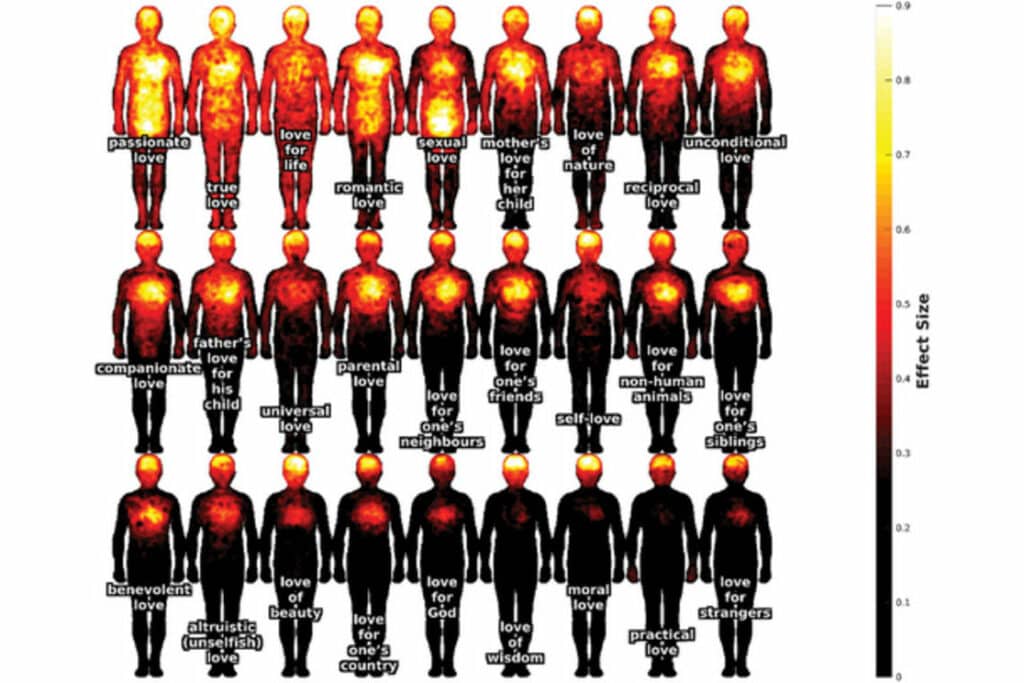Love is a fundamental biological, psychological, societal, and religious phenomenon. Philosophers have frequently made differences between various forms of love, such as self-love, romantic love, friendship love, love of God, and neighborly love, using various conceptual models. On the other hand, psychologists and neuroscientists have, up to now, focused primarily on understanding the feelings, behaviors, and neurological mechanisms connected to romantic love and paternal love.
It remains elusive how the models construed by philosophers relate to actual experiences of love and to which extent they are merely nominal creations connecting phenomena that have little to do with each other. There needs to be more knowledge of how different types of love are experienced as embodied feelings and how these experiences are related to one another.
New research from scientists at Aalto University distinguished between 27 types of love. Scientists also mapped where in the body different kinds of love are felt and how strongly they are experienced.
Participants were asked to describe their experiences with 27 different sorts of love, including romantic love, sexual love, parental love, and love for friends, strangers, nature, God, or oneself. Participants were questioned about where in their bodies they experienced various forms of love and how intense those feelings were physically and mentally.
Their research contends that a continuum of love ranges from weaker to stronger. All the varieties had a strong head sensation, but the rest of the body experienced them differently; some spread only to the chest, while others affected the entire body. The strongest forms of love were felt most widely throughout the body.

The scientists used an online survey to gather information from hundreds of participants to create the map. Young women in higher education made up the majority of the respondents. Participants were instructed to color in a body silhouette to represent the different types of love they experienced. They were also questioned on the different bodily and mental effects, their level of enjoyment, and how they related to touch. They were then asked to rank how closely the various types of love were related.
There are two types of love between people: sexual and nonsexual. Those forms of love that contain a sexual or romantic component are remarkably similar.
Philosopher Pärttyli Rinne, who coordinated the study, said, “It was also interesting to find a strong correlation between the physical and mental intensity of the emotion and its pleasantness. The more strongly a type of love is felt in the body, the more strongly it’s felt in the mind and the more pleasant it is.”
“The team was intrigued by the fact that all the different types of love are felt in the head. ‘When we move from more strongly experienced types of love to less strongly experienced types, the sensations in the chest area become weaker. It may be that, for example, love for strangers or wisdom is associated with a cognitive process. It may also be that there are pleasant sensations in the head area. This is something that should be investigated further.”
“There are cultural differences in love, and the demographics of the study group are linked to the experience of love. ‘If the same study were done in a highly religious community, love for God might be the most strongly experienced love. Similarly, if the subjects were parents in a relationship, as in our ongoing brain study project, love for children could be the strongest type.”
Journal Reference:
- Pärttyli Rinne, Mikke Tavast, Enrico Glerean and miko Sams. Body maps of loves. Philosophical Psychology. DOI: 10.1080/09515089.2023.2252464
